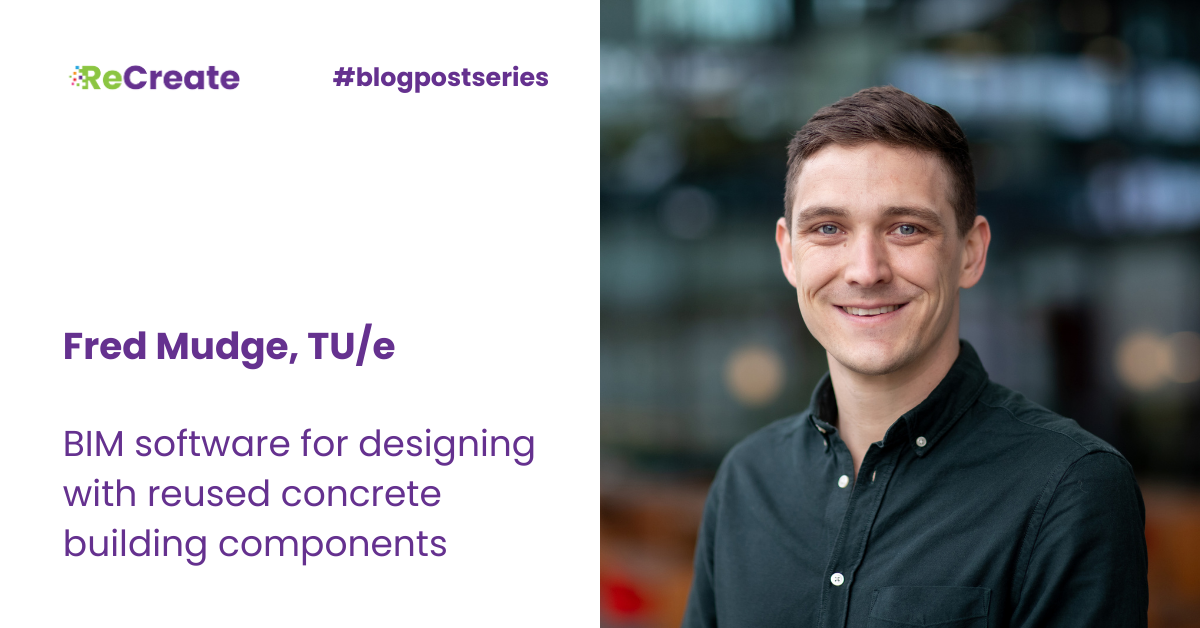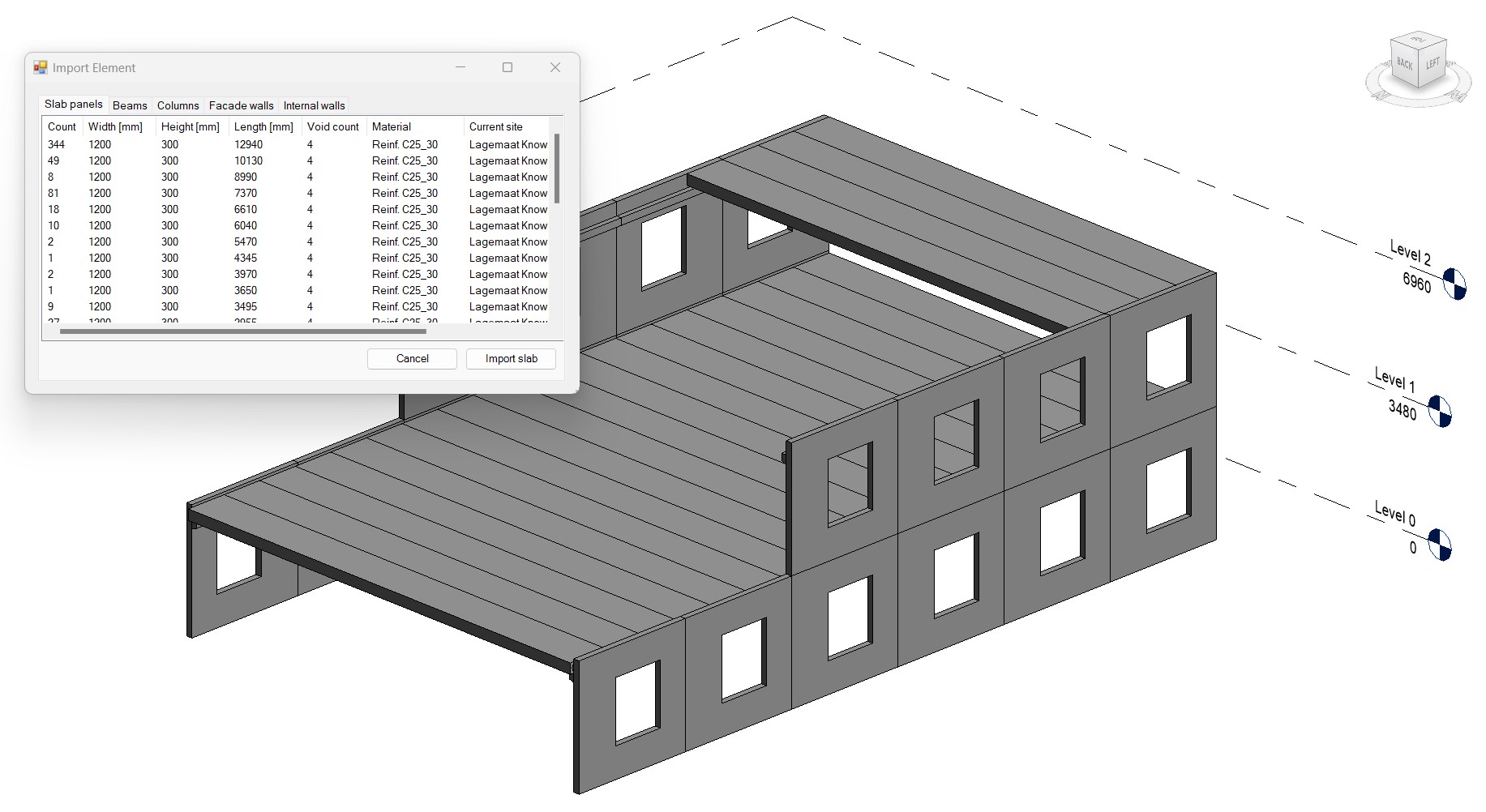
Using object-oriented programming to bridge the gap between architecture and structural engineering in a circular design.
Fred Mudge, Eindhoven University of Technology – 14 September 2023
Over the past several decades, the construction industry has been responsible for large portions of annual global CO2 emissions and overall material usage. To counteract this, the ReCreate project aims to establish a circular value chain for precast concrete buildings – a switch which could offer massive improvements to the industry’s sustainability by keeping materials in use for longer, thereby preserving the value contained in the existing building stock and reducing the need for new materials. This requires research and development across the entire reuse process, from deconstruction, transport and logistics, quality control, design and planning of new buildings up to reassembly in a new location and for a new purpose.
As a doctoral researcher at TU Eindhoven, my work focuses on the topic of design within the above context and aims to assist architects and engineers to design circular buildings, by developing a software application which provides functionality specifically for this task.
In a traditional building design workflow, the architect normally produces a design based on relatively few constraints. A structural engineer reviews the design and presents reinforcements to ensure that the structure is sufficiently robust and stable. After all designs have been finalized, construction can commence and (for precast systems) elements are manufactured that match the designs. The design process for reused elements is fundamentally different because the geometric and structural attributes of the elements are already fixed at the start of the design process. The challenge for a designer is therefore to select and arrange elements into a spatially effective building structure considering their respective geometries. Each addition or change to this arrangement affects the distribution of forces through the structure. The forces exerted on each element should therefore be calculated continuously and compared to its relevant structural capacities (axial force, bending moment etc.) to ensure no element is loaded past a safe limit.
The design application addresses both challenges mentioned above. It includes a feature for browsing through a library (database) of previously used building components that are available for reuse. A user can then select and import desired elements directly into a 3D building information modelling (BIM) environment and place them in a new design assembly. Furthermore, automatic structural load calculation methods using finite element methods (FEM) are built into the application and can be performed on-demand, to identify any elements exerted past their capacities. Lastly, environmental benefit is quantified and enhanced by automatic embodied carbon calculation, considering factors such as the distance of an element from the construction site and the amount of CO2 required to get it into its new position.
Considering the novelty of reusing concrete building components, the first step to developing the application was to create a so-called “object model” for creating and storing digital representations of physical building elements. This requires a sound understanding of the parameters that describe all relevant aspects (geometric, structural etc.) of the various types of elements (beams, columns, wall panels, slabs etc.). These parameters, element types and how they interact and relate to each other also help define the database schema for storing element information (i.e., the element library). A trial database was created and populated with element data from a recently completed deconstruction project – Prinsenhof A in Arnhem, the Netherlands.

A user can browse through a library of elements, import and position them in a Revit model to make up a new building design.
Subsequently, the focus shifted to developing algorithms for automatically connecting elements within the model, based on their relative locations, and for calculating structural forces and moments within all elements, based on expected floor loadings and the anticipated “load paths” that eventually take all forces down to the building’s foundations. Lastly, a framework for calculating the environmental impact resulting from using new and reused precast concrete building components will be developed and added to the application, to ensure that an environmental benefit is achieved for each reuse design, compared to a design consisting of newly manufactured elements.
Currently, the design application is developed as an add-on for Autodesk Revit. New building designs are therefore in the form of a Revit (.rvt) model, which can be easily converted to a more universal format such as Industry Foundation Class (.ifc). The design application is currently still under development, with a “proof of concept” prototype planned for the end of 2023.

